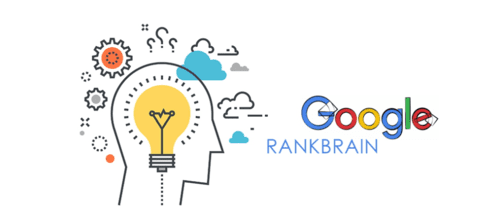What is Google RankBrain?
RankBrain is one of the major components of Google’s core algorithm. It is a machine-learning system that Google uses to process unfamiliar queries.
As a response to poor-quality search results, fake news, and biased content, Google set out to create a better experience for users with its 2013 Hummingbird algorithm update.

The search engine mentioned that out of an estimated 400 million searches per day, about 15% of them had never been seen before. RankBrain was added to the Hummingbird algorithm in October 2015 to remedy the issue of poorly categorized content brought about by these new search terms.
Today we’ll explore how this 5-year old update is still relevant today and how you can use it to your advantage in SEO.
Why did Google introduce RankBrain?
Before the 2015 update, Google would class search results based on the contents of a web page.
All you had to do was include the keywords you were targeting (ad verbatim) in your content to better your chances of appearing in the results pages.
However, due to the large number of brand new daily search queries, the search engine had trouble classing relevant content to what the searcher was looking for.
For this reason, new search queries were not adequately answered because Google essentially had to “guess” what users were searching for.
For example, if you searched “Sony grey console” in 2014, you would likely get results that included each individual query. Most of which would not be what you were looking for (e.g. A Grey Console Table would probably feature in your results).
There is, of course, no example of this because of how effective the update has been.
However, with RankBrain, this is what you get:

What changed? Well, instead of matching your never-before-seen search to exact key terms, Google’s RankBrain looks to match your search to keywords that have already been seen and classed.
How does RankBrain work in SEO?
We won’t confuse you with the Nitti-Gritties of how machine-learning and artificial intelligence (AI) works. Instead, we will look at the impact of the Rank Brain update on search results and your website’s positioning.
It’s simple: the AI is continually testing and studying user’s behaviors to a search result.
It specifically looks at:
- Dwell Time – amount of time users spend on a page.
- Organic Click-through-rate (CTR) – percentage of users that click onto a site vs impressions.
- Bounce Rate – how many users quickly left a site after opening the link.
- Pogo-sticking – when users open several pages to try skim through and find the most relevant one.
For Example…
Let’s say you want to start a new diet and discovered intermittent fasting.
You type in “beginner intermittent fasting tips” and click on the first result that comes up.
Instead of giving useful tips on how to transition into this new lifestyle, it lists the benefits of intermittent fasting and testimonials from users that BOUGHT their diet plan.
That is clearly not what you were looking for, so you quickly leave the site and move on to the next result. This one is better but speaks about fasting tips for religious purposes. This is also not what you were looking for.
You finally click on one that looks promising and it has all the tips you were looking for listed. You spend a significant amount of time consuming the content.
During this entire process, Google RankBrain has registered your click-through based on the Meta data these pages presented. You clicked on them because they included key terms you were looking for. It also factored in the time spent on the page.
The more people spend reading through a page, also known as dwell time, the more the AI will think it is relevant to the query.
This page will continue to be tried and tested for other relevant queries to gauge its performance there as well.
Earlier this month, we explored how important user intent is to ranking better on Google. This little anecdote is exactly how RankBrain has influenced search results based on user intent.
Quick Tips on RankBrain Optimization
As you have come to see, Google now understands users’ INTENT behind the search based on what they click on and the time they spend time reading. What does this mean for SEO?
It simply means you need to tweak the way you create content.
Here are a few tips that could help:
Long Tail Keywords are (somewhat) Obsolete
Some SEO experts have declared unequivocally that long-tail keywords are dead.
For example, an old SEO strategy was to create pages based on long-tail keywords to increase the chances of ranking for each query.
This is no longer a relevant strategy because whether you target “Best Keyword Research Tool” or “Best Tool for Keyword Research”, Google understands that both searches have a similar intent.
Essentially, you are cannibalizing your own content by having separate pages.
Target Medium-Tail Keywords Instead
Long-tail keywords are typically 4+ words long. Medium-tails, on the other hand, are 3 to 4 words long only. Using medium tail keywords will help you narrow in on exactly what you need to write about.
In a search about the Paleo Diet, search results on “Paleo Diet Food List” can tell you that users are interested in food lists. As below:

However, there is no need to create a separate page for the query “Can You Eat Rice on the Paleo Diet” as you would have already answered it on the food list page.
More Tips on Optimizing for RankBrain
- Use natural language: gone are the days of needing to stuff grammatically incorrect keywords into your content. Add that article so your content reads naturally.
- Improve content relevance: understand the query and what exactly the user is looking for and answer it.
- Check featured snippets: Content that gets a snippet is content that Google deems relevant to a query. Read the snippet to understand what your content needs to be centered around.
- Use natural language: gone are the days of needing to stuff grammatically incorrect keywords into your content. Add that article so your content reads naturally.
- Improve content relevance: understand the query and what exactly the user is looking for and answer it.
- Check featured snippets: Content that gets a featured snippet is content that Google deems relevant to a query. Read the snippet to understand what your content needs to be centered around.


